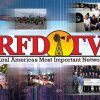Having a healthy and safe supply of feed is crucial for any livestock operation, but feed experts worry a new draft by the EPA could threaten future supplies.
It surrounds formaldehyde, which is used to control pathogens in feed, like salmonella and E-Coli. The American Feed Association says it prevents those dangers and others like them from getting into the animal, and eventually into the human food supply. However, a new draft from the EPA says it poses an unreasonable risk to human health. The risk evaluation claims it can cause lung damage or even cancer.
The American Feed Association calls the draft concerning and says it ignores decades of science. They say it has been an effective tool used safely for years.
“The exposure level that EPA is going to try and set, is going to be so far below that it’s going to be impossible to manufacture any longer. “And in a lot of production systems, there’s no better method than formaldehyde. One of the things formaldehyde does is it kills the salmonella but it also keeps the feed salmonella-free for 21 days and that’s plenty long enough for the feed to get through the animal, and so we don’t have any recontamination of salmonella,” said Gary Huddleston.
The group points out new research shows formaldehyde could be a key ingredient for fighting African Swine Fever, which industry experts warn could be devastating to the U.S. pork supply if introduced.




